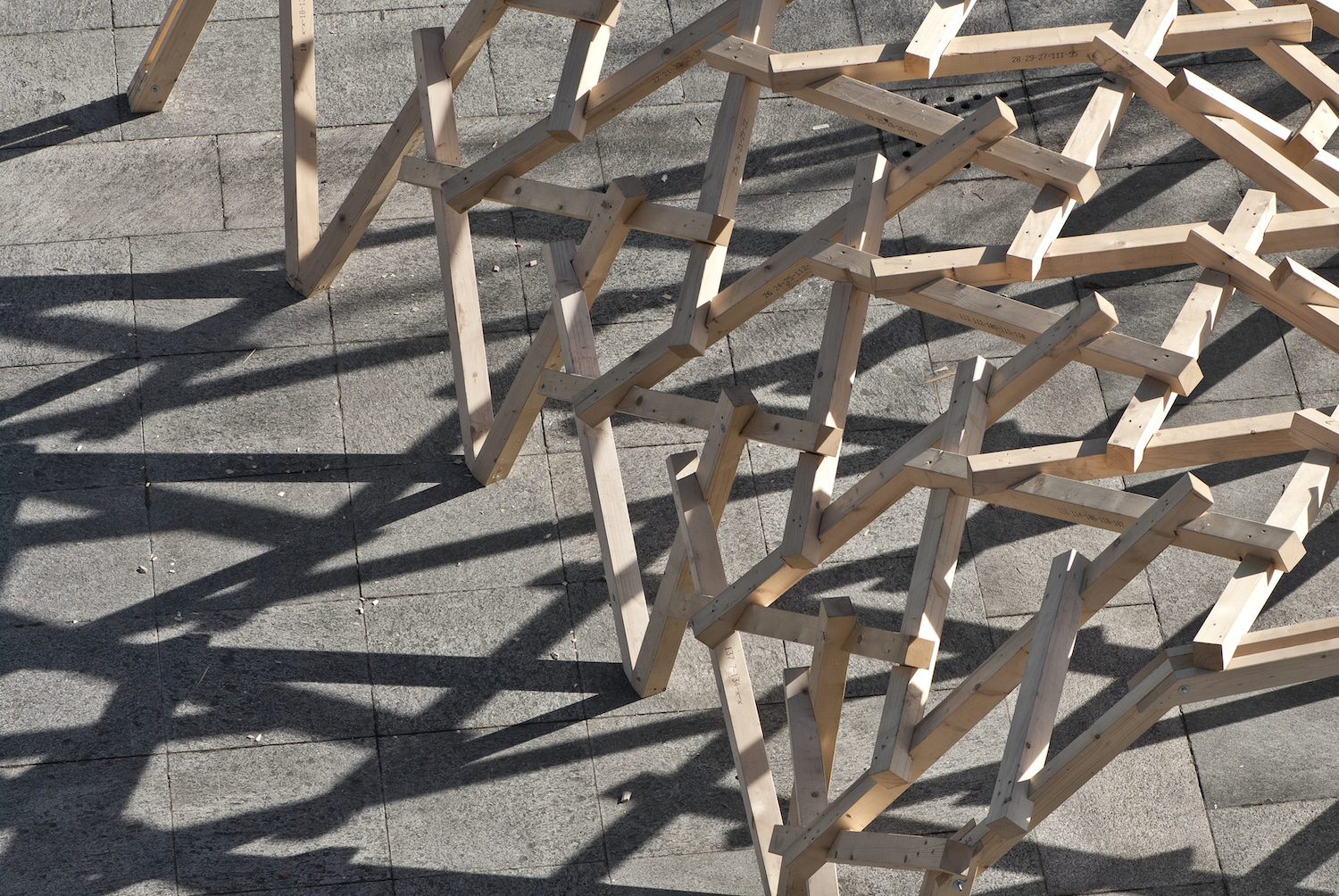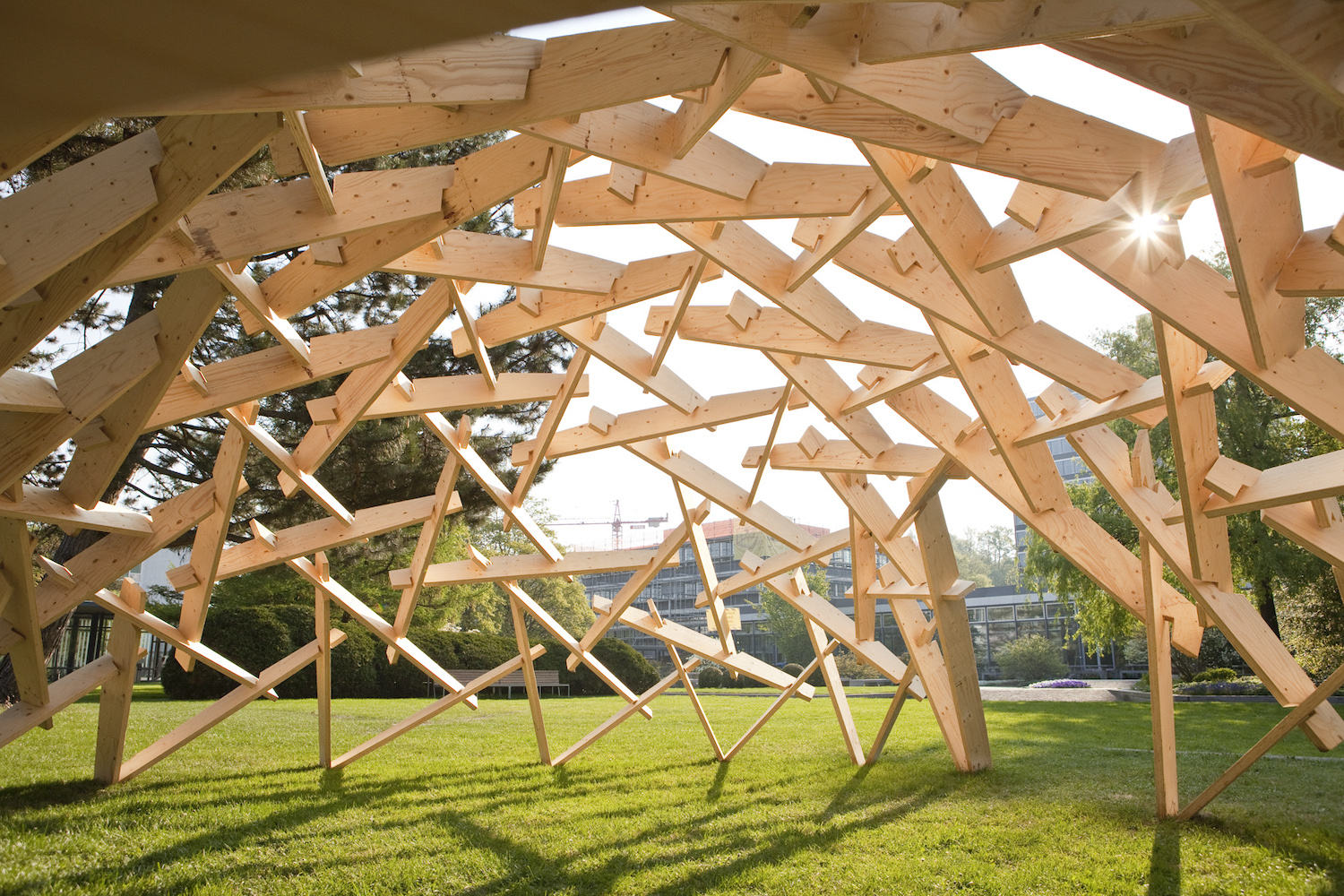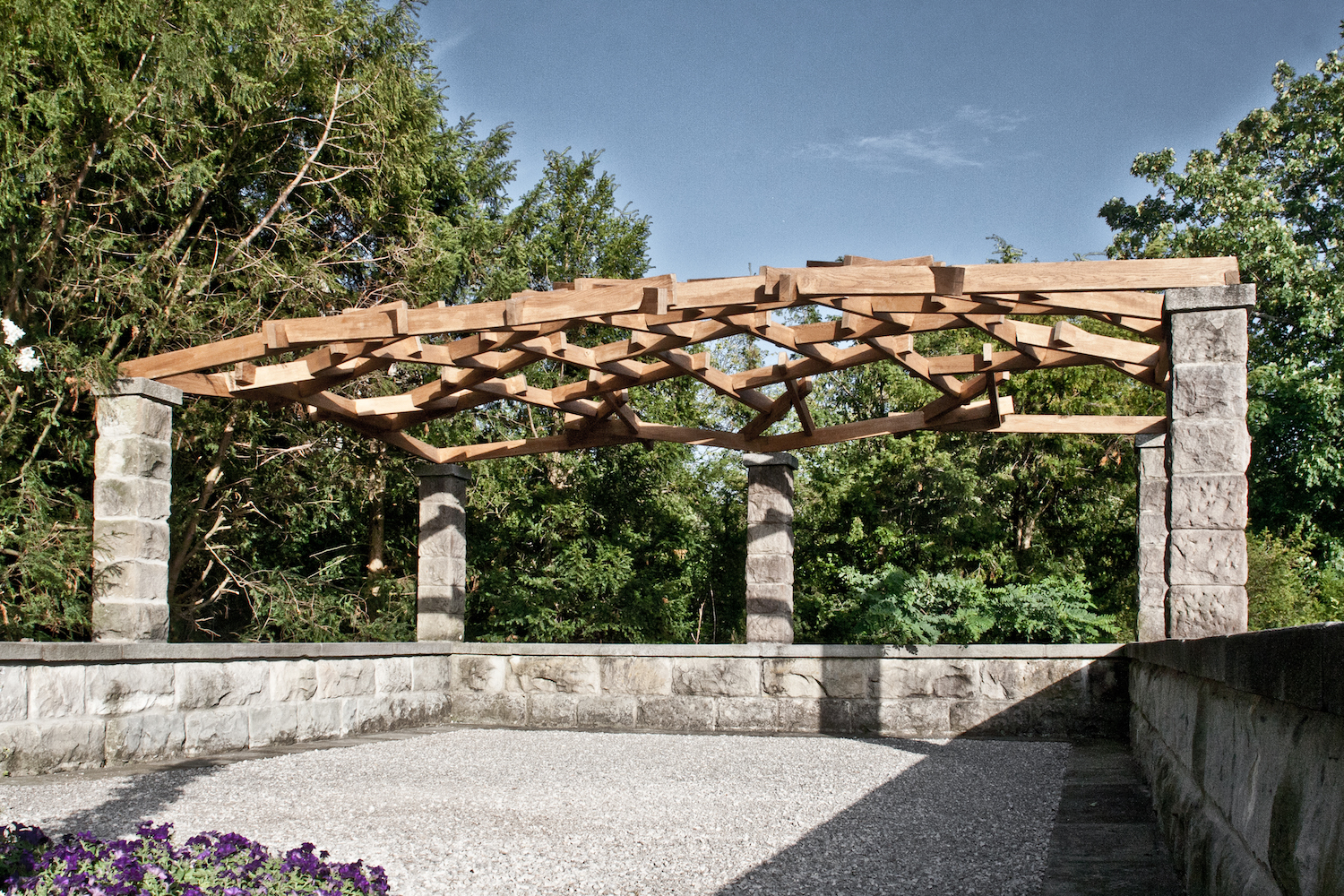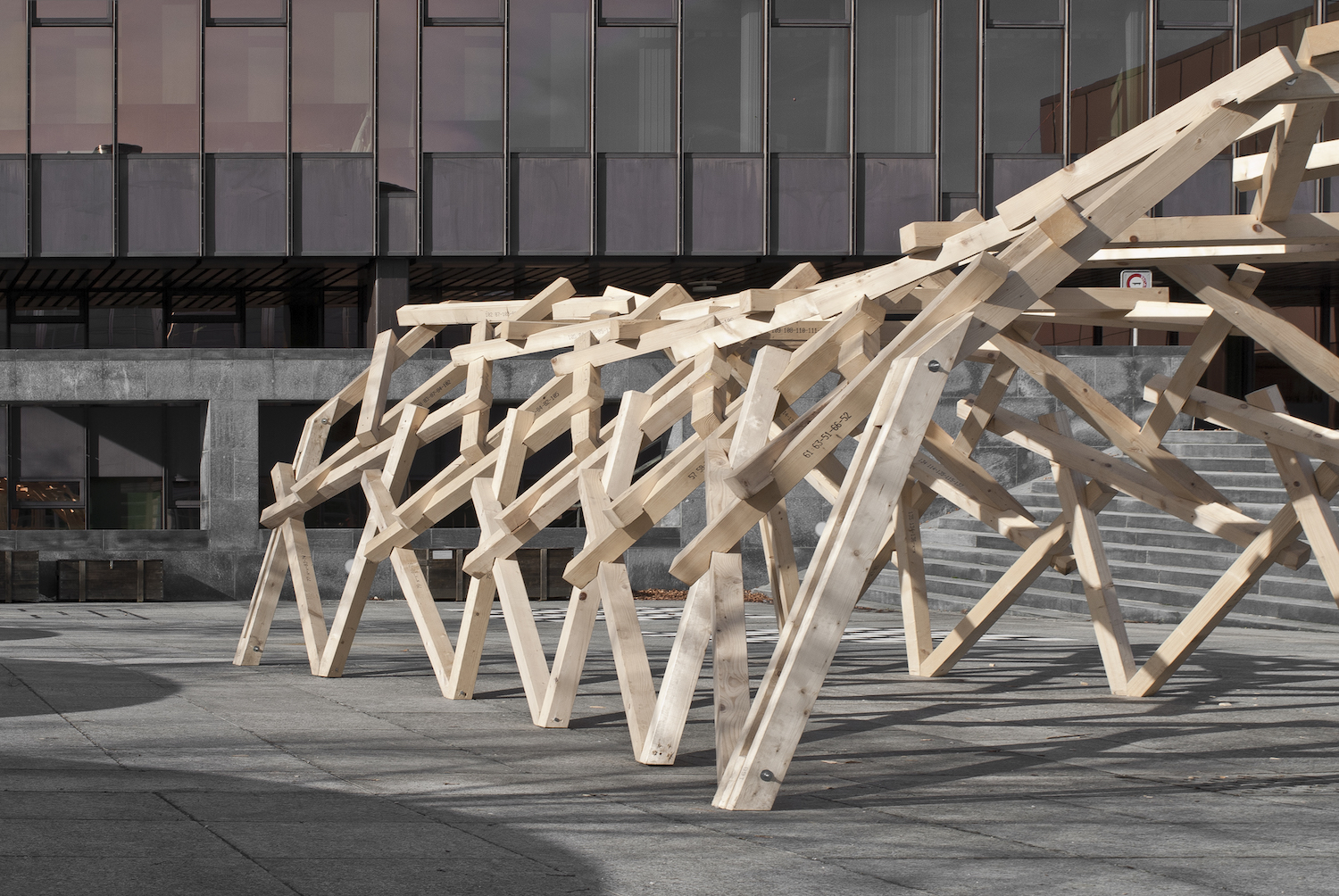
Reciprocal Frameworks
Research and Teaching
ETH Zurich
2011 - 2015
Research and Teaching
ETH Zurich
2011 - 2015
Reciprocal structures are known to builders since time immemorial and they can be regarded as a universal principle of construction. In history they have been used to efficiently bridge large spans deploying short wooden elements. They were additionally attractive for buildings where rapid assembly and dismantling was required, and where geographical circumstances impeded the use and transportation of longer construction elements. In many treatises medieval and renaissance architects, mathematicians and builders like Leonardo da Vinci studied the possibilities of these structures. Because of the complex structural behaviour, however, there has been only very limited number of applications in architecture to the present.
A digital design tool developed at Federal Institute of Technology Zurich enhances the design scope and the application potential of reciprocal frame systems. It is intended to make the use of simple wooden elements in buildings more attractive, above all in lower-cost free structural forms. It offers a unique completely new aesthetics which combines ancient knowledge and innovative technology. Nearly all vaulted and flat forms are possible, in a lot of available materials.
A digital design tool developed at Federal Institute of Technology Zurich enhances the design scope and the application potential of reciprocal frame systems. It is intended to make the use of simple wooden elements in buildings more attractive, above all in lower-cost free structural forms. It offers a unique completely new aesthetics which combines ancient knowledge and innovative technology. Nearly all vaulted and flat forms are possible, in a lot of available materials.
 Canopy in the ETH entrance courtyard
Canopy in the ETH entrance courtyardThis RF construction is made of a squared timber type and the simplest of joints. The design was undertaken exclusively using the digital instrument, whereas production was undertaken manually. The specific arrangement of the timbers in different lengths produces a differentiated structure in which the interdependencies of structure and form are immediately intelligible.
 Pergola ETH Science City
Pergola ETH Science CityThis pergola for the ETH Zurich campus was initially designed using the digital instrument and statically optimized during the design process using physical and digital models. The one-of a- kind elements were then cut from wooden boards using a 3-axis CNC milling machine.
 Villa Hatt Canopy
Villa Hatt CanopyIn this pergola for the ETH guesthouse an inner reciprocal frame lattice is enhanced on the principle of the Leonardo-da-Vinci bridge. The material is hardwood, the production was done by conventional a joinery machine.
 Saddle Roof
Saddle RoofAs a rule in reciprocal frameworks the circumstance that all of the elements rest mutually on each other produces convexly curved forms, such as domes and arches for example. However, comparatively regular mesh designs in which the slats follow the lines of curvature can – when the lines are given a particular alignment – also result in concavely curved surfaces, in this case a saddle surface.